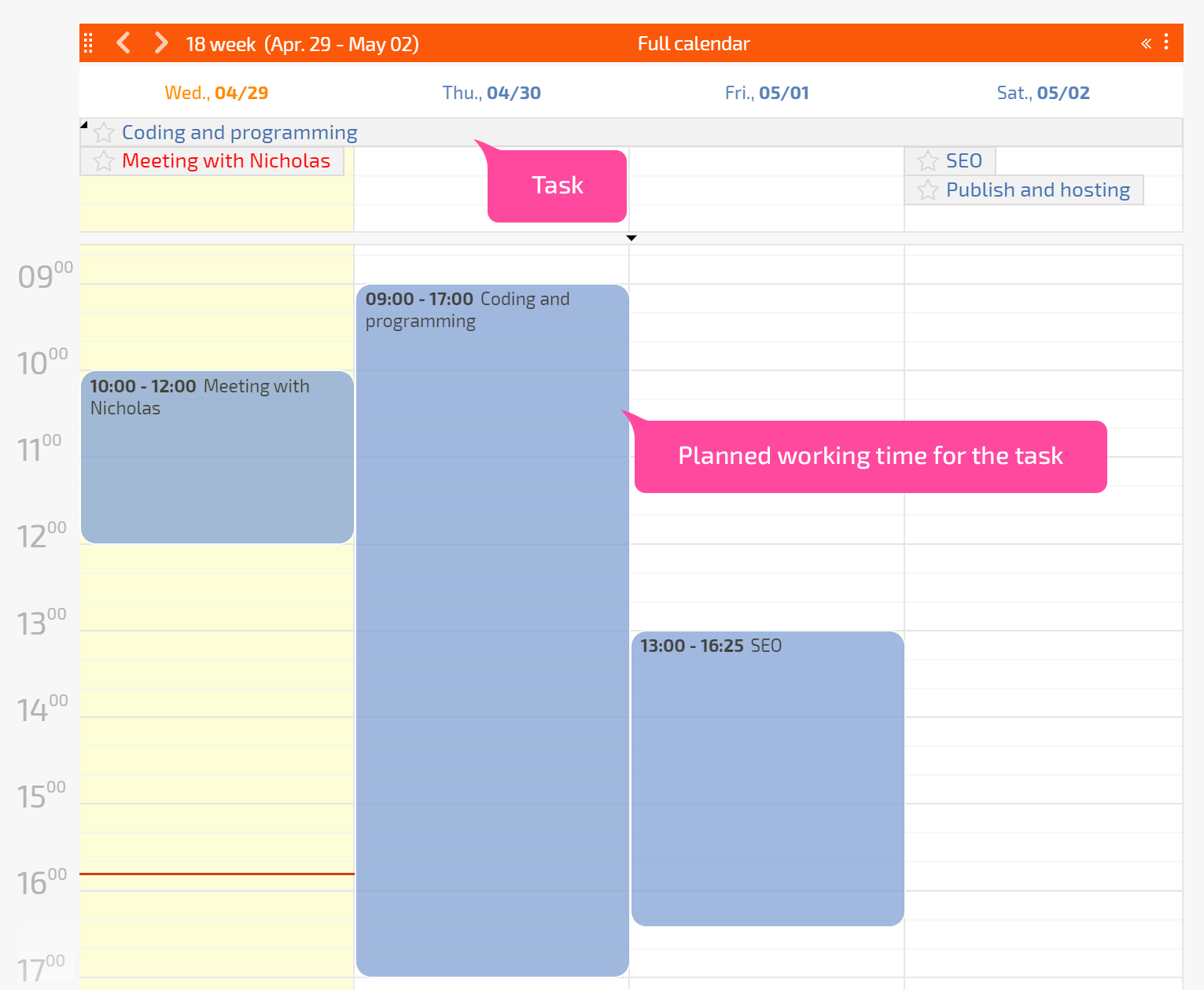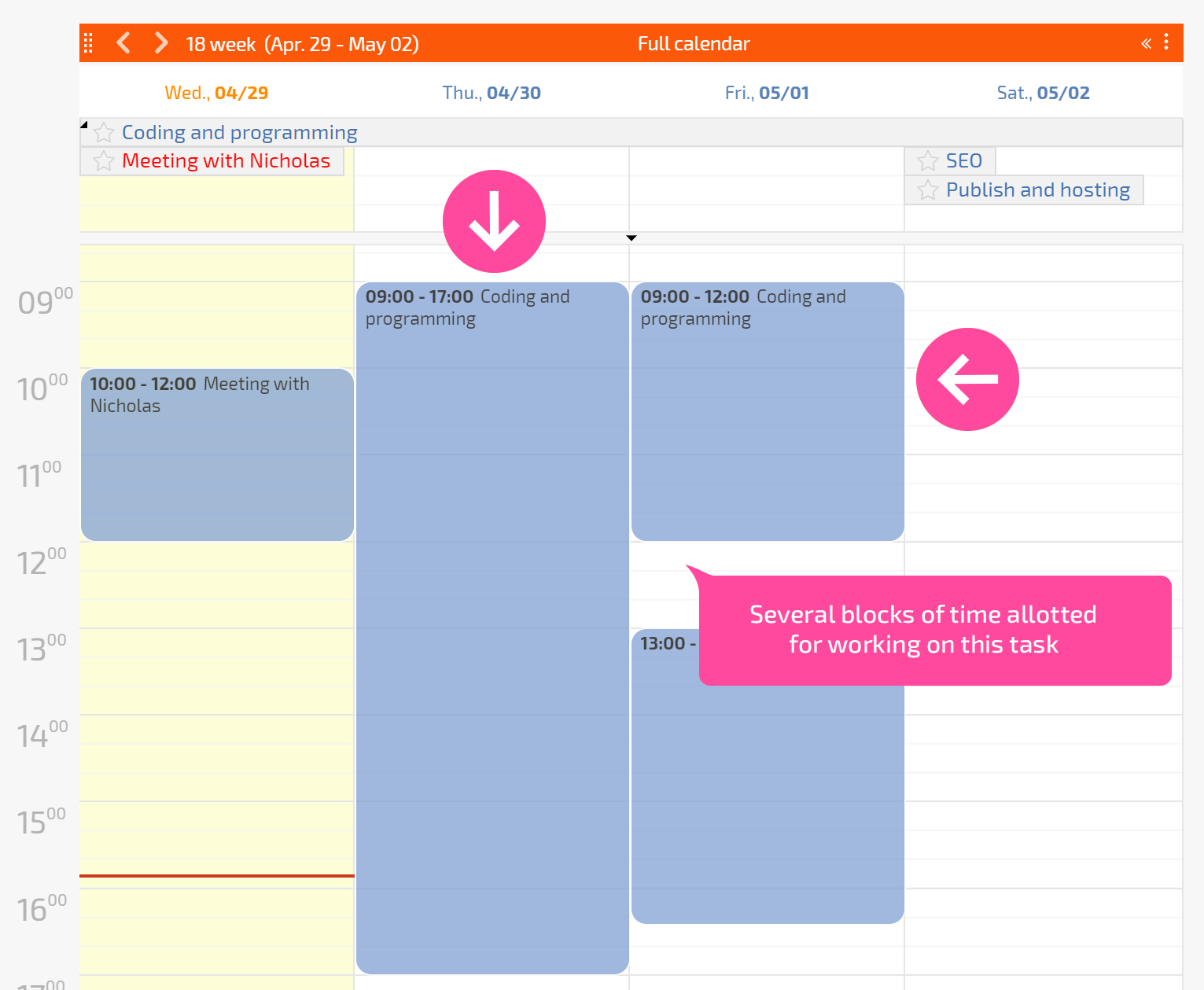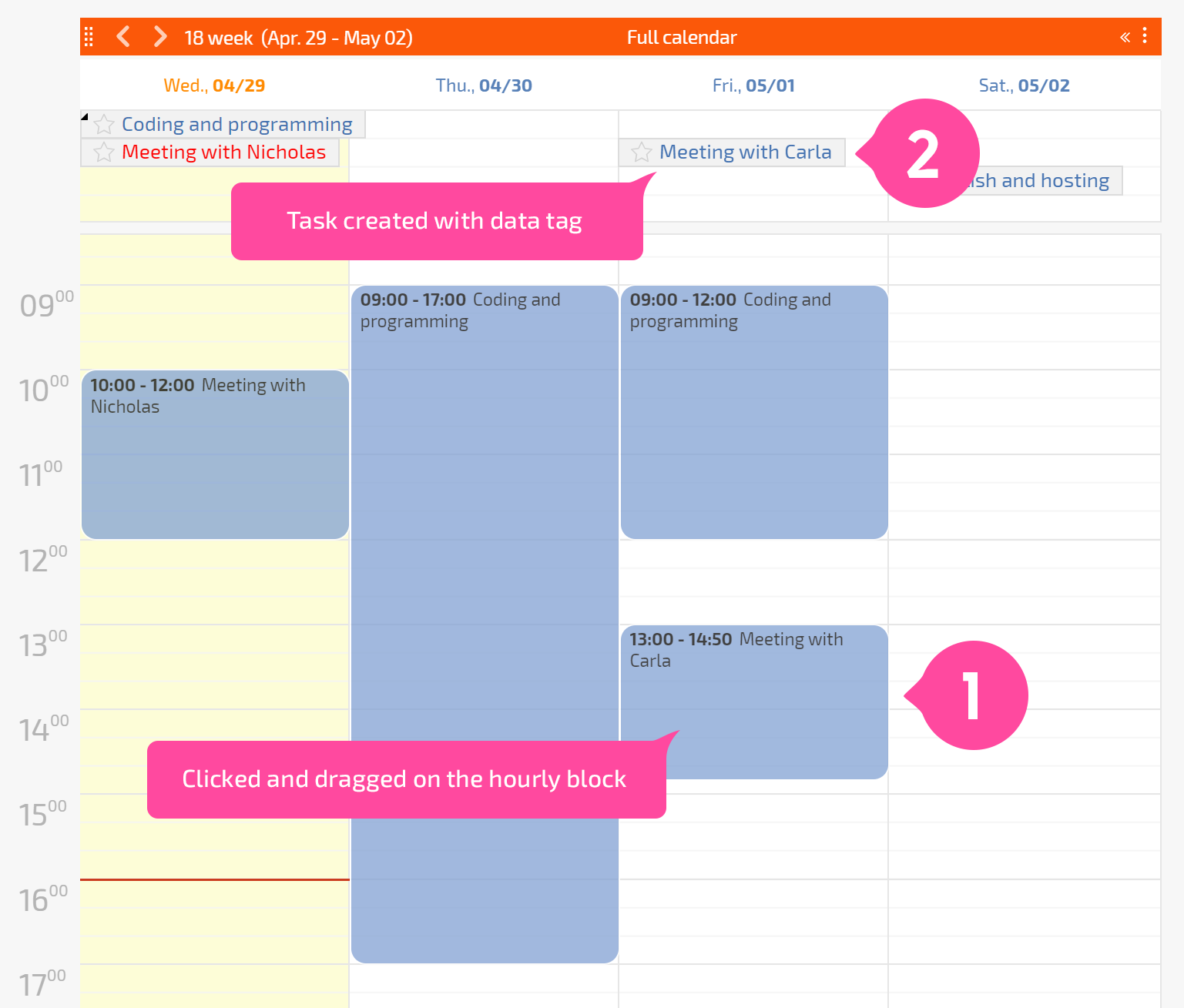Using hourly blocks: Difference between revisions
(Created page with "In a planner hourly block, data tags can be displayed that contain "Date" and "Time period" fields (a data tag must have both of these fields). This provides flexible use...") |
No edit summary |
||
| (7 intermediate revisions by the same user not shown) | |||
| Line 1: | Line 1: | ||
In a planner [[hourly block]], data tags can be displayed that contain "Date" and "Time period" fields (a data tag must have both of these fields). This provides flexible use of the hourly block, both for adding data tags of a desired type to a task and as a means of displaying tasks. | In a planner [[Hourly calendar | hourly block]], data tags can be displayed that contain "Date" and "Time period" fields (a data tag must have both of these fields). This provides flexible use of the hourly block, both for adding data tags of a desired type to a task and as a means of displaying tasks. | ||
Let's take a look at some examples of working with the hourly block using a standard data tag, Planned working time. | Let's take a look at some examples of working with the hourly block using a standard data tag, [[Time management | Planned working time]]. | ||
==Drag a task to the hourly block== | ==Drag a task to the hourly block== | ||
If you drag a task from a list or task calendar to the hourly block, the type of data tag set in the hourly block will be added to the task. The task block is also displayed in the hourly block: | If you drag a task from a [[List (Planner) | list]] or [[task calendar]] to the hourly block, the type of [[Data Tags | data tag]] set in the hourly block will be added to the task. The task block is also displayed in the hourly block: | ||
https://pic.planfix.ru/pf/mr/qSRbOf.png | |||
This block can be expanded and moved, changing the values in the "Time period" field of the corresponding data tag. In our example, we're using the Planned working time data tag, so the size of the block corresponds to the amount of time planned for working on the task. | This block can be expanded and moved, changing the values in the "Time period" field of the corresponding data tag. In our example, we're using the '''Planned working time''' data tag, so the size of the block corresponds to the amount of time planned for working on the task. | ||
A task can be dragged to the hourly block multiple times, each time creating a new entry with the data tag and taking a slot in the hourly block: | A task can be dragged to the hourly block multiple times, each time creating a new entry with the data tag and taking a slot in the hourly block: | ||
https://pic.planfix.ru/pf/72/TcC05u.png | |||
| Line 24: | Line 24: | ||
https://pic.planfix.ru/pf/30/NDLlQj.png | |||
Latest revision as of 19:50, 29 April 2020
In a planner hourly block, data tags can be displayed that contain "Date" and "Time period" fields (a data tag must have both of these fields). This provides flexible use of the hourly block, both for adding data tags of a desired type to a task and as a means of displaying tasks.
Let's take a look at some examples of working with the hourly block using a standard data tag, Planned working time.
Drag a task to the hourly block
If you drag a task from a list or task calendar to the hourly block, the type of data tag set in the hourly block will be added to the task. The task block is also displayed in the hourly block:

This block can be expanded and moved, changing the values in the "Time period" field of the corresponding data tag. In our example, we're using the Planned working time data tag, so the size of the block corresponds to the amount of time planned for working on the task.
A task can be dragged to the hourly block multiple times, each time creating a new entry with the data tag and taking a slot in the hourly block:

Create a task by clicking on the hourly block
There's a "reverse" example of how to use the hourly block: if you click on it and drag the new box to take up however much time you want, Planfix will create a task that automatically has the desired data tag attached:

This is a convenient way to quickly create a task for a certain period of time, such as a meeting or task.
Important
if there is more than one data tag displayed in the hourly block, the data tag listed first will be added to the task created.
